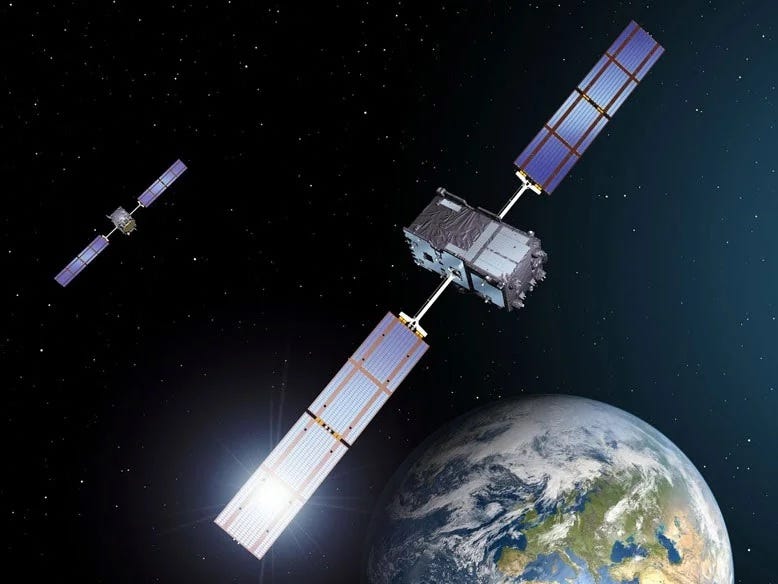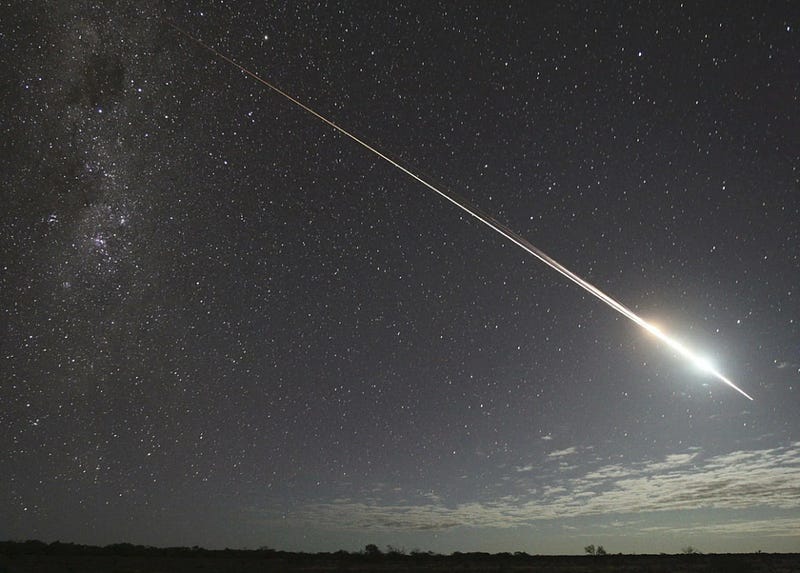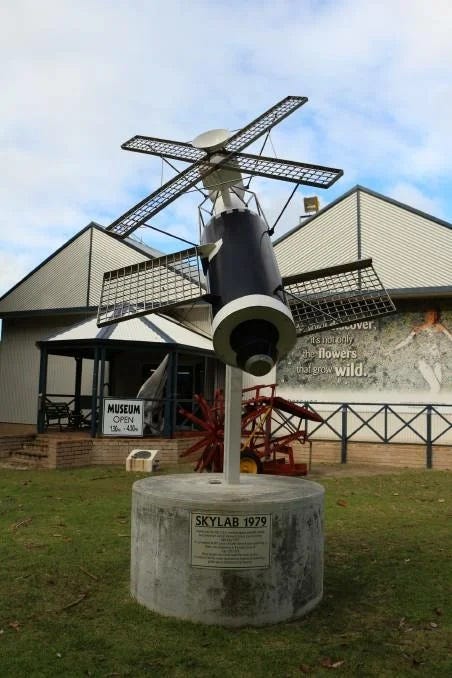Understanding the Risks of Satellite Reentry and Air Travel
Written on
Chapter 1: The Dynamics of Satellite Reentry
Recently, a subscriber posed several intriguing questions regarding the phenomenon of satellites falling from orbit:
“Why do satellites descend while the Moon remains in place? Can a satellite that partially burns up during atmospheric reentry collide with an airplane? What’s the likelihood of such an event occurring? Have there been any similar incidents?”
This inquiry is indeed thought-provoking. Let’s dissect it systematically.
Section 1.1: Why Do Satellites Fall from Orbit?
No human-made object is everlasting, and satellites are no exception. Over time, their orbits deteriorate, leading to reentry and combustion in the atmosphere. But why do satellites behave this way, while natural satellites like moons have been orbiting planets for billions of years?

Source: ampleupdates.com
Theoretically, if a satellite is launched with the appropriate velocity for its altitude, it will maintain a circular orbit indefinitely, provided its speed remains unchanged. However, this is not sustainable due to two primary factors:
- Atmospheric Drag: Although space is often described as a vacuum, this isn’t entirely accurate. The atmosphere at high altitudes is sparse but still exists, with a density significantly lower than at sea level. The constant collisions with gas molecules gradually decelerate the satellite, causing its orbit to decline.
- Ampere’s Force: When a satellite moves through Earth's magnetic field, changes in the magnetic field induce an electromotive force within the satellite. This polarization attracts charged particles, creating electric currents that, in turn, produce a force that slows the satellite down.
Consequently, a mere 0.1% reduction in velocity can lead to a satellite descending into the atmosphere.
Section 1.2: What Happens to Satellites During Reentry?
The fate of a reentering satellite varies. Depending on its angle and design, it may either disintegrate completely or partially survive its atmospheric descent. The mass of the object and its speed also play crucial roles.

Source: nationalgeography.com
When satellites are intentionally deorbited, the entry angle is calculated to ensure complete incineration. However, there are instances where large objects, such as orbital stations, are deorbited incorrectly or miscalculated, leading to debris reaching Earth. Military satellites often have thermal protection, allowing them to survive reentry with minimal damage.
Chapter 2: The Collision Risk with Airplanes
The first video discusses an intriguing case where NASA abandoned a spacecraft in orbit for five years. When it eventually returned, its unexpected outcome raised many eyebrows.
The falling debris can travel at speeds between one to five kilometers per second. To put this in perspective, a bullet from an AK-47 travels at approximately 910 m/s. Thus, smaller debris could severely damage an aircraft and its passengers, while larger pieces could potentially destroy it. For this reason, planned deorbiting of satellites is directed towards remote, uninhabited ocean areas, and flight paths are altered accordingly.

Source: earthsky.org
However, accurately predicting the trajectory of falling debris is incredibly challenging. For instance, in 2007, an aircraft narrowly missed colliding with unidentified debris over New Zealand. This incident was likely linked to a Russian satellite scheduled for deorbit that day, which failed to provide precise reentry timings to air traffic control.
Section 2.1: Ground-Level Hazards from Falling Debris
Falling space debris is not only a threat to aircraft but also poses risks to individuals on the ground. Throughout history, various pieces of debris have descended to Earth without completely burning up.
In 1979, the Skylab orbital station reentered not over the Indian Ocean as intended, but over Australia, damaging properties on several farms. This incident is one of many where satellites have landed in populated areas without causing casualties.

Source: nationalgeography.com
Military satellites present an additional level of danger due to their use of powerful radioisotope thermoelectric generators (RTGs), which act like miniature nuclear reactors. Should they burn up in the atmosphere, they can release radioactive materials, contaminating large areas. For example, in 1978, a Soviet reconnaissance satellite reentered over Canada, spreading radiation across nearly a thousand square kilometers. Fortunately, there were no reported casualties, but cleanup efforts cost millions.
If you find this information fascinating, please subscribe to our channel for more articles on space exploration and related topics. You can also support us by becoming a member for just $5 a month, helping us create even more engaging content.
The second video delves into SpaceX’s remarkable feat of launching and then destroying the largest spacecraft in history, providing insights into the challenges faced during such missions.